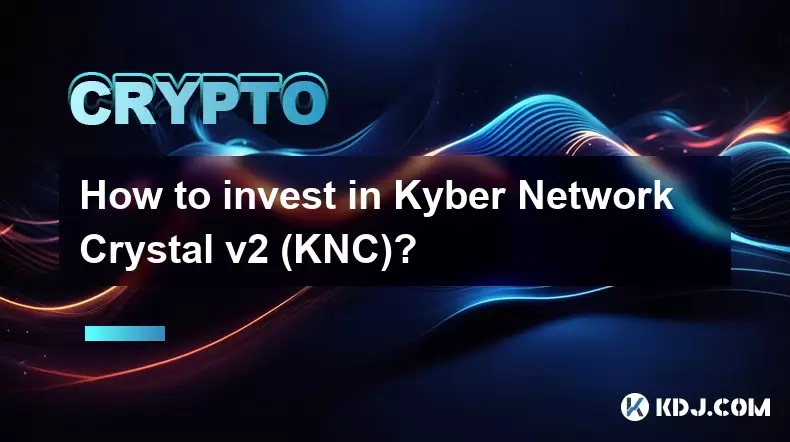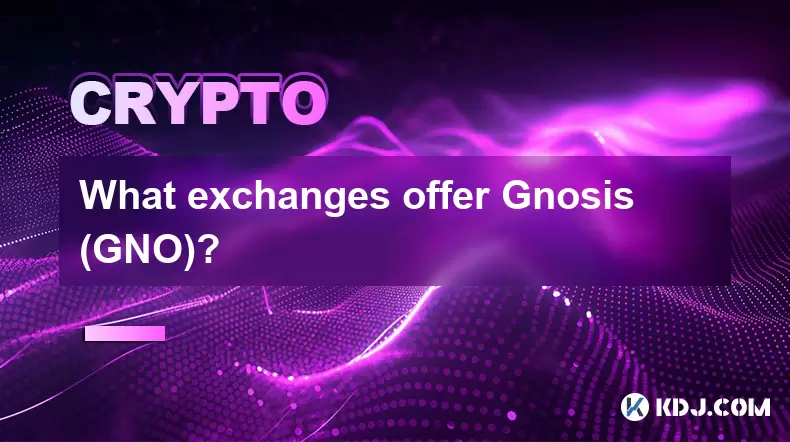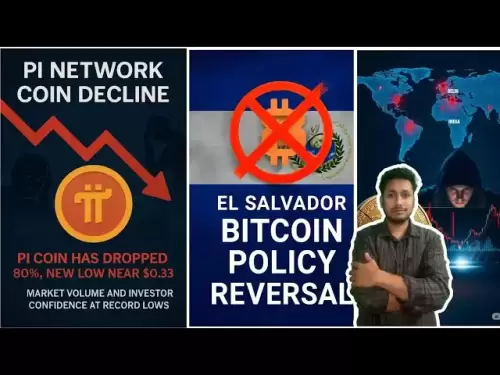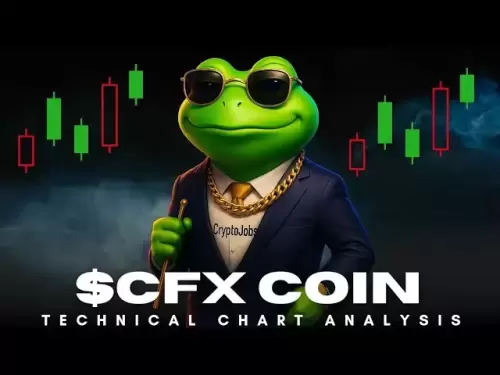-
 Bitcoin
Bitcoin $119700
0.53% -
 Ethereum
Ethereum $4508
5.39% -
 XRP
XRP $3.270
2.86% -
 Tether USDt
Tether USDt $1.000
0.00% -
 BNB
BNB $831.0
2.92% -
 Solana
Solana $189.6
6.89% -
 USDC
USDC $0.9999
-0.01% -
 Dogecoin
Dogecoin $0.2350
2.92% -
 TRON
TRON $0.3500
1.34% -
 Cardano
Cardano $0.8420
6.73% -
 Chainlink
Chainlink $23.26
8.42% -
 Hyperliquid
Hyperliquid $44.42
1.44% -
 Stellar
Stellar $0.4512
3.16% -
 Sui
Sui $3.895
5.15% -
 Bitcoin Cash
Bitcoin Cash $618.7
5.88% -
 Hedera
Hedera $0.2601
4.43% -
 Ethena USDe
Ethena USDe $1.001
0.01% -
 Avalanche
Avalanche $24.45
4.90% -
 Litecoin
Litecoin $128.1
5.41% -
 Toncoin
Toncoin $3.454
1.64% -
 UNUS SED LEO
UNUS SED LEO $9.065
0.44% -
 Shiba Inu
Shiba Inu $0.00001359
3.41% -
 Uniswap
Uniswap $11.42
1.78% -
 Polkadot
Polkadot $4.165
6.36% -
 Cronos
Cronos $0.1664
-0.50% -
 Ethena
Ethena $0.8108
1.79% -
 Dai
Dai $1.000
0.00% -
 Pepe
Pepe $0.00001213
5.22% -
 Bitget Token
Bitget Token $4.438
0.25% -
 Aave
Aave $313.3
5.02%
Why does the price of Ada coin perform differently on specific exchanges?
Cardano's (ADA) price varies across exchanges due to liquidity, trading volume, regulatory differences, fees, market manipulation, and differing user bases, creating unique market conditions on each platform.
Mar 07, 2025 at 11:50 am

Key Points:
- Price discrepancies between exchanges arise from varying liquidity, trading volume, and order book dynamics.
- Regulatory differences and geographical limitations influence price fluctuations.
- Fees, withdrawal limits, and technological infrastructure impact price discrepancies.
- Market manipulation and arbitrage opportunities contribute to price variations across exchanges.
- Different exchange user bases and trading preferences play a significant role.
Why Does the Price of Ada Coin Perform Differently on Specific Exchanges?
The price of Cardano (ADA), like other cryptocurrencies, doesn't always trade at the same price across all exchanges. This disparity stems from a confluence of factors that interact to create unique market conditions on each platform. Understanding these factors is crucial for navigating the cryptocurrency market effectively.
Liquidity and Trading Volume: Exchanges with high trading volume generally experience tighter spreads and less price volatility. High liquidity means buyers and sellers readily exist, leading to a more stable price. Conversely, exchanges with low trading volume might show wider price discrepancies due to fewer transactions and a less efficient market.
Order Book Dynamics: Each exchange has its own unique order book – a record of buy and sell orders. The interplay of these orders, including their size and price, directly impacts the current market price. A large buy order on one exchange, for example, might temporarily inflate the price on that specific platform.
Regulatory Differences and Geographical Limitations: Regulations governing cryptocurrency trading vary significantly across jurisdictions. Some countries have stricter regulations, potentially limiting trading activity and impacting price discovery. Geographic restrictions can also limit access to certain exchanges, creating localized price variations.
Fees, Withdrawal Limits, and Technological Infrastructure: Exchange fees, both trading and withdrawal fees, influence the overall cost of trading ADA. Higher fees can indirectly affect price by impacting the profitability of arbitrage – the practice of buying low on one exchange and selling high on another. Similarly, withdrawal limits and the exchange's technological infrastructure can create bottlenecks and affect price movements.
Market Manipulation and Arbitrage Opportunities: Unfortunately, market manipulation, while illegal, is a potential factor contributing to price discrepancies. Large-scale coordinated buying or selling can artificially inflate or deflate prices on a specific exchange. Arbitrage opportunities, on the other hand, naturally tend to minimize price differences between exchanges, as traders profit from buying low and selling high. However, the size and speed of arbitrage activity can also influence the prices momentarily.
Exchange User Bases and Trading Preferences: The demographics and preferences of an exchange's user base can also impact ADA's price. If a particular exchange attracts a larger number of long-term holders, for example, the price might be less volatile than on an exchange primarily used by short-term traders. Different user bases might also have differing risk tolerances and trading strategies, leading to varied price movements.
Technological Factors: The underlying technology of each exchange plays a role. Differences in matching engines, order execution speeds, and security protocols can indirectly affect price. A faster, more efficient matching engine, for instance, might facilitate more rapid price adjustments to market changes, resulting in smaller price discrepancies compared to slower platforms.
Information Asymmetry: The speed at which information is disseminated across exchanges can lead to temporary price differences. News events, regulatory announcements, or significant market developments might affect prices differently depending on how quickly that information reaches each platform's traders. A delayed response on one exchange can create a short-term price discrepancy.
The Role of Tether (USDT): Many exchanges use Tether (USDT), a stablecoin pegged to the US dollar, as a trading pair for ADA. However, fluctuations in USDT's own value can indirectly affect the ADA price, creating discrepancies between exchanges with different levels of USDT stability or liquidity.
Psychological Factors: Market sentiment plays a role. Fear, uncertainty, and doubt (FUD) or excessive optimism can affect trading decisions and cause temporary price swings on different exchanges. These psychological factors can vary in intensity across platforms due to differences in user base and information flow.
Impact of Major Market Events: Major market events, such as announcements from Cardano's development team, partnerships, or broader cryptocurrency market trends, can affect ADA prices differently across exchanges. The speed and manner in which these events are reflected in the order books of different exchanges can lead to temporary price discrepancies.
Common Questions and Answers:
Q: Why is the ADA price higher on Exchange A than Exchange B?
A: Several factors could contribute, including higher liquidity and trading volume on Exchange A, different regulatory environments, varying fees, or even temporary market manipulation. It's essential to consider the interplay of these factors to understand the specific reason for the discrepancy.
Q: Is it possible to profit from ADA price differences between exchanges?
A: Yes, arbitrage trading attempts to exploit these price differences. However, this requires speed, efficiency, and an understanding of the risks involved, including the potential for rapid price changes and transaction fees eating into profits.
Q: Are price differences between exchanges a sign of market manipulation?
A: Not necessarily. While market manipulation is a possibility, it's more likely that a combination of factors, such as liquidity differences, regulatory variations, and fees, is the primary cause of price discrepancies. However, unusually large or persistent price differences warrant closer investigation.
Q: How can I find the best price for ADA?
A: Use cryptocurrency price comparison websites that track ADA prices across multiple exchanges. Be aware that the displayed price is only a snapshot in time and can change rapidly. Always factor in trading fees and withdrawal limits when making your decision.
Disclaimer:info@kdj.com
The information provided is not trading advice. kdj.com does not assume any responsibility for any investments made based on the information provided in this article. Cryptocurrencies are highly volatile and it is highly recommended that you invest with caution after thorough research!
If you believe that the content used on this website infringes your copyright, please contact us immediately (info@kdj.com) and we will delete it promptly.
- Unich's OTC Exchange: Surging with $1.2B Volume – What's the Hype?
- 2025-08-13 02:50:11
- MoonBull's Explosive Moves: Your Crypto Whitelist Ticket to Ride!
- 2025-08-13 02:30:11
- MAGACOIN Finance: Don't Miss the Presale Bonus!
- 2025-08-13 02:30:11
- Trump's Crypto Kingdom: $2.4 Billion and Counting
- 2025-08-13 02:50:11
- Solana, LSTs, and SEC Approval: A New Dawn for Crypto?
- 2025-08-13 02:55:12
- Bitcoin's Profit Surge: Unpacking the BTC Value Boom
- 2025-08-13 02:55:12
Related knowledge

How to purchase Aragon (ANT)?
Aug 09,2025 at 11:56pm
Understanding Aragon (ANT) and Its PurposeAragon (ANT) is a decentralized governance token that powers the Aragon Network, a platform built on the Eth...

Where to trade Band Protocol (BAND)?
Aug 10,2025 at 11:36pm
Understanding the Role of Private Keys in Cryptocurrency WalletsIn the world of cryptocurrency, a private key is one of the most critical components o...

What is the most secure way to buy Ocean Protocol (OCEAN)?
Aug 10,2025 at 01:01pm
Understanding Ocean Protocol (OCEAN) and Its EcosystemOcean Protocol (OCEAN) is a decentralized data exchange platform built on blockchain technology,...

How to invest in Kyber Network Crystal v2 (KNC)?
Aug 12,2025 at 05:21pm
Understanding Kyber Network Crystal v2 (KNC)Kyber Network is a decentralized liquidity hub built on the Ethereum blockchain that enables instant token...

Where can I buy UMA (UMA)?
Aug 07,2025 at 06:42pm
Understanding UMA and Its Role in Decentralized FinanceUMA (Universal Market Access) is an Ethereum-based decentralized finance (DeFi) protocol design...

What exchanges offer Gnosis (GNO)?
Aug 12,2025 at 12:42pm
Overview of Gnosis (GNO) and Its Role in the Crypto EcosystemGnosis (GNO) is a decentralized prediction market platform built on the Ethereum blockcha...

How to purchase Aragon (ANT)?
Aug 09,2025 at 11:56pm
Understanding Aragon (ANT) and Its PurposeAragon (ANT) is a decentralized governance token that powers the Aragon Network, a platform built on the Eth...

Where to trade Band Protocol (BAND)?
Aug 10,2025 at 11:36pm
Understanding the Role of Private Keys in Cryptocurrency WalletsIn the world of cryptocurrency, a private key is one of the most critical components o...

What is the most secure way to buy Ocean Protocol (OCEAN)?
Aug 10,2025 at 01:01pm
Understanding Ocean Protocol (OCEAN) and Its EcosystemOcean Protocol (OCEAN) is a decentralized data exchange platform built on blockchain technology,...

How to invest in Kyber Network Crystal v2 (KNC)?
Aug 12,2025 at 05:21pm
Understanding Kyber Network Crystal v2 (KNC)Kyber Network is a decentralized liquidity hub built on the Ethereum blockchain that enables instant token...

Where can I buy UMA (UMA)?
Aug 07,2025 at 06:42pm
Understanding UMA and Its Role in Decentralized FinanceUMA (Universal Market Access) is an Ethereum-based decentralized finance (DeFi) protocol design...

What exchanges offer Gnosis (GNO)?
Aug 12,2025 at 12:42pm
Overview of Gnosis (GNO) and Its Role in the Crypto EcosystemGnosis (GNO) is a decentralized prediction market platform built on the Ethereum blockcha...
See all articles

























































































